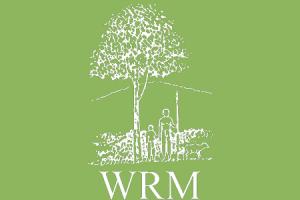I visited Cameroon in December 2006 and again in September 2007. In both trips I was shocked by the sheer number of trucks loaded with huge logs of tropical trees that could be seen on almost any road. Most of them were on their way to the ports from where they would be exported –unprocessed- to mostly northern countries.
Cameroon
Bulletin articles
18 July 2007
Indigenous peoples living in the tropical rainforests of Central Africa are widely dispersed and identify their groups by a variety of names. Numbering a total of 300,000 to 500,000 people, those members of communities from several ethnic groups characterized by their small stature are identified under the generic name of “pygmies” (see WRM Bulletin Nº 119).
Bulletin articles
19 June 2007
The Indigenous hunter-gatherers of the central African forests, so-called Pygmy peoples, consist of at least 15 distinct ethnolinguistic groups including the Gyéli, Kola, Baka, Aka, Bongo, Efe, Mbuti, western Twa, and eastern Twa living in ten central African countries: Angola, Cameroon, Equatorial Guinea, Central African Republic, Gabon, Republic of the Congo (Congo), Democratic Republic of the Congo, Uganda, Rwanda, and Burundi. Their estimated total number is from 300 000 to 500 000 people.
Other information
24 March 2007
Last December I was travelling with three friends (a Cameroonian and a Swiss couple) along the public route that crosses the oil palm plantations belonging to Socapalm (Société Camerounaise des Palmeraies) in the Kribi region. On reaching the control post installed by the company – that we had crossed earlier on – we were stopped by a private security guard who demanded our identity documents. On asking him why he wanted them he informed us that Socapalm “secret agents” aware of our visit had ordered him to do so.
Bulletin articles
24 March 2007
Southern Cameroon is red and green. Green like the forest of the Congo basin that breathes and has a heartbeat and that offers its inhabitants the biotic resources necessary to subsist; and red like the dusty roads where trucks run, transporting the bodies of forest giants that will be turned into furniture, flooring, doors, etc. Along Cameroon’s open veins flows its vital element to the port of Douala, where the vampire from the North comes to quench its thirst…
Other information
26 February 2007
According to the FAO definition, rubber plantations are “forests.” Recently we visited one of these “forests” in Kribi, Cameroon and talked with the workers and local population. Unlike the FAO “experts,” nobody, absolutely nobody there perceives these plantations as forests.
Other information
30 November 2006
In Cameroon, like in other African countries such as Ivory Coast or Ghana, the production of oil palm is distributed in 3 sectors: an agro-industrial sector, a village sector controlled by agro-industries, and a small-scale traditional sector.
Even though Indonesia and Malaysia hold a strong leadership position in the oil palm global market, the agro-industrial sector in Cameroon can rely on several advantages.
Bulletin articles
7 March 2006
Industrial logging is one of the main direct causes of forest biodiversity loss. Many organizations and governments have focused on illegal logging and less so on destructive legal logging (see WRM Bulletin Nº 98). In this respect, a recent report (“Legal Forest Destruction. The Wide Gap Between Legality and Sustainability”) provides a broader perspective by looking at the Dutch timber trade, its focus on legality and the impact of legal logging on forests.
Bulletin articles
8 February 2006
A new report by Friends of The Earth International; “Campagna Per La Riforma Della Banca Mondiale”; CEE Bankwatch Network, and World Economy, Ecology & Development issued in January 2006, highlights the role of the European Investment Bank as financer of so called “development” projects in the South, including Africa. The question raised is: development for whom? The research, entitled “The European Investment Bank In The South. In Whose Interest?”, gives insights around that question.
Bulletin articles
8 January 2006
Cameroon has undergone a major re-organisation of its forestry sector over the last two decades. A process of policy reform was implemented, sponsored by the World Bank, and this resulted in the new Forest Law of 1994, which included changes to forest taxes and regulations relating to the allocation of concessions, including the requirement for management plans, and new provisions for community forestry.
Bulletin articles
12 October 2005
To outsiders, the Bagyeli may appear very poor. They have next to nothing in the way of material possessions, little or no money, and are still often without a permanent house. Yet one of the most important indicators of wealth for these peoples is the access they enjoy to the forest and its resources and the amount to which they are able to participate in decision-making processes relative to their livelihoods.
Bulletin articles
14 July 2005
The story of the rapid destruction of Cameroon’s forests that has occurred since the 1980s, does not suffer from a lack of attention: many testimonies, analyses and recommendations have been written and many donor-led interventions to halt the deforestation have been simultaneously attempted. Between 1980 and 1995, it is estimated that close to 2 million hectares of forest were cut down in Cameroon.
